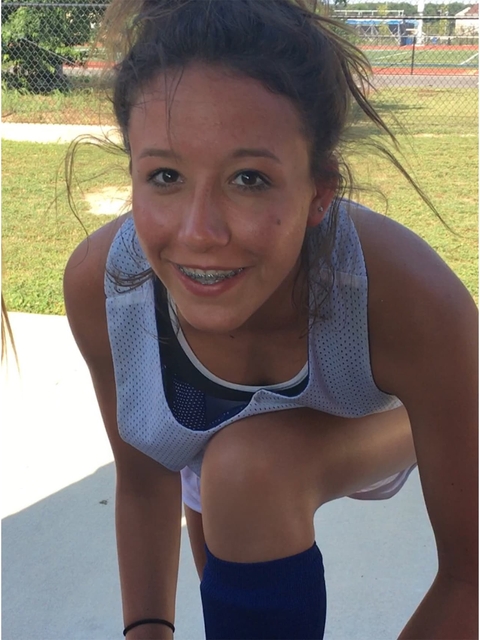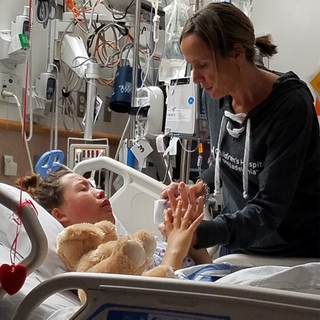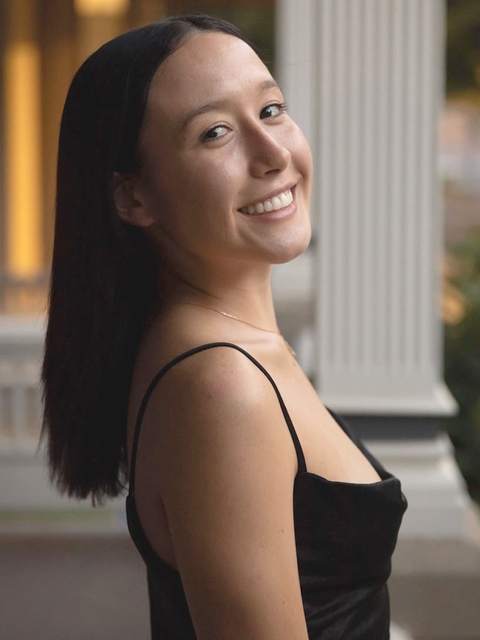Jaw Tumor Removal and Reconstruction: Bryn’s Story
Jaw Tumor Removal and Reconstruction: Bryn’s Story

Twenty-two-year-old Bryn is thrilled to be on a path to becoming a successful cosmetologist, but when she was in eighth grade, her world was turned upside-down. What seemed like a routine visit to her dentist led to surgery in which nearly half her jaw had to be removed. Remarkably, the effects of that drastic procedure can barely be seen, thanks to the extensive experience and deep expertise of the surgeons at Children's Hospital of Philadelphia (CHOP).
“I never had any symptoms or any pain,” Bryn says. She thought she might have a cavity in the canine on the left side of her mouth. The dentist took an X-ray. Then another. Then a whole-mouth scan. Concerned, the dentist got her in to see an oral and maxillofacial surgeon right away. A biopsy was scheduled for the next day.
“That’s when I saw the X-ray, and saw the large space,” says Bryn’s mother, Kristin. When the oral and maxillofacial surgeon called with the biopsy results, Kristin was told that Bryn had a rare tumor in the dental tissue, called an odontogenic fibromyxoma, that is benign but extremely fast-growing.
Alarmed, the family contacted CHOP and was connected to a team of surgeons with CHOP’s Division of Plastic, Reconstructive and Oral Surgery. The discussion of her tumor removal was led by Eric Granquist, DMD, MD, while the reconstruction of the jaw was spearheaded by Oksana Jackson, MD.
Bone from the leg to replace the jaw
“I was left in the dark a little,” Bryn recalls about her initial diagnosis, “and looking back, that was the best route.”
Kristin, on the other hand, listened to Drs. Granquist and Jackson describe what surgical procedures needed to happen, and she “just about lost it.” Bryn would have a whole section of her jaw and teeth removed by Dr. Granquist. Then Dr. Jackson would take part of her leg bone to replace the jawbone, take soft tissue from her leg to fill in the space, and take a vessel from the leg to bring blood to the new tissue in her jaw.
“I needed to process it all, and I wanted a second opinion,” Kristin says. “The surgical team was understanding and kind.”
Bryn was told more about what she was facing: “I was realizing this is not going to be fun. My mom and grandma kept saying it was going to be OK, but I was like, ‘You don’t know that.’”
The family traveled to Boston for a second opinion. Specialists there laid out a plan very similar to what they heard at CHOP. “I wanted her to make the decision, Boston or CHOP,” Kristin says. “I was exceedingly worried about her emotional stability, and I wanted to give her an element of control.”
“Doing it in Boston would mean more everything — more travel, more school missed,” Bryn says. “I liked CHOP more. I loved Dr. Granquist. He told me, ‘We’re going to get this done and over with,’ which is my speed. A friend went to CHOP for a cleft palate, so I felt a connection.”
They scheduled the surgery at CHOP.
An understanding and attentive team

“It was my first-ever surgery,” Bryn explains. “I had no idea what I was walking into.”
Bryn has a considerable fear of needles, even having once passed out in a CHOP elevator after getting blood drawn. Kristin explained that a needle would cause trauma, so the operating room team made sure Bryn was under anesthesia before inserting any needles. “They understood her fear,” Kristin says.
The surgery took seven hours. After Bryn woke up, she was unable to talk and was given a whiteboard to write on. Kristin notes that Bryn was “sort of down” at first, but that the CHOP team “was very attentive about pain management. They stayed on top of it so carefully. For me, that was monumental.”
Bryn’s recovery in the hospital was steady — except for one incident where she had an allergic reaction to a medicine and felt like her whole body was on fire, a story that she now recounts with a laugh. Soon she was able to walk on the leg that had the bone section removed, a milestone that signaled she could go home.
“We were given detailed instructions about how to manage the incisions,” Kristin says. “We felt we knew what was expected of us to ensure the best outcome.”
After several months of healing, Bryn’s CHOP team collaborated with the Hospital of the University of Pennsylvania to begin creating custom prosthetics to replace the missing areas of tissue in Bryn’s jaw. Their work was so superb that it’s barely noticeable Bryn had such a major procedure.
Beyond medical care

Bryn and her mom both have high praise not only for CHOP’s medical care but for the whole experience. Because procedures that affect appearance can be very challenging for a child to process, a vital part of the Division of Plastic, Reconstructive and Oral Surgery is its Psychosocial Support Services. Throughout her journey, Bryn met with the division’s psychologist, Leanne Magee, PhD, who helped her work through her emotions. “I was angry,” Bryn explains. “No one knew how to talk to me except for her. She validated me.”
“Our goal is to have a patient-centered surgical approach that begins with our oral surgeons who weigh in on how we remove these tumors, while our plastic surgeons design a reconstructive surgery that incorporates both function and appearance,” explains Cassandra Ligh, MD, FACS, one of the reconstructive plastic surgeons at CHOP.
To this day, Bryn’s CHOP team goes above and beyond. For example, when Bryn was getting braces, the orthodontist near the family’s home in Delaware received specific guidance from Dr. Granquist.
And Bryn and Kristin have fond memories of a CHOP parking attendant who was always kind and thoughtful during every visit to the hospital.
“We’ll always have a relationship with CHOP,” says Kristin. Bryn agrees and adds, “There’s something about CHOP that brings people together.”